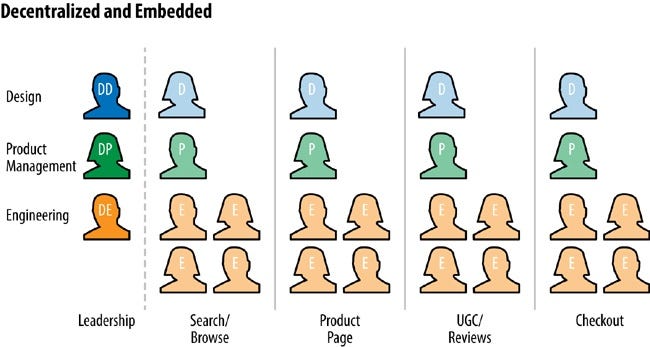It was 9 a.m. I clicked on the Google Meet link and joined another stand-up at Klarna. The meeting was, as expected, about dev work since we are a product team and four out of six are devs. More often than not, I didn’t have anything to contribute as a designer. I started asking myself if I really had to be there. The same goes for the other agile ceremonies of planning, review, and retro. They were also dev-focused.
After the stand-up, the PM and engineering manager stayed behind to chat. I didn't stick around to find out about what—I had my focus block to get to, and honestly, that was the highlight of my day.
The Daily Grind and Distractions
Thirty minutes into my focus block, I felt that itch to check Slack. I gave in and checked, looking for that scratch that the red notification badge would give me. There were red notification badges, alright.
I found a flood of messages from the PM and engineering manager. With my notifications off, I missed that they tried to get ahold of me to show the latest designs. The PM was not happy about it. She made it known that I needed to be reachable at all times. I got her point, but how was I supposed to get any real design work done if I'm always on call? I resigned myself to the fact that in a fast-paced tech company, being always available was just part of the deal.
But then the news dropped that would change everything.
Transitioning to a Centralized Design Team
My manager told me that we would lift designers out of product teams and centralize them. I had read ‘Org Design for Design Orgs’ where the authors touted the centralized model as better. I was excited.
Being part of a product team (i.e. being embedded) has its upsides:
Development is faster and iterative
Designers are empowered and engaged as full team members
Designers have greater ownership of what is delivered
Output is higher quality
But there are also many downsides:
The user experience is fractured
There are inefficiencies as efforts are duplicated
Designers are focused on one problem for a long time
Designers become lonely and disconnected
There is little cohesive design culture and community
User research is marginalized

In the Centralized Partnership model, designers are part of a design team instead. This has many upsides:
Experiences are treated holistically
Designers collaborate with design peers who can improve their skills
Designers aren’t isolated on product teams that don’t understand what they do
Designers receive guidance from design mentors
Designers understand the breadth of what is being delivered

I think these upsides have a big impact on designers’ career and craft. I.e. It’s better for your growth as a designer. You’ll find yourself at your dream company sooner. And I think that is more important than what the embedded model has to offer.
Embracing the Centralized Model
When the transition finally happened a few months later, I experienced these changes:
Increased Feedback: Regular reviews with my design lead led to valuable UI and UX feedback, which improved my craft.
Working on weaknesses: Because of the feedback, I was able to work on my weakness (UI design), becoming a more well-rounded designer.
High-Priority Projects: Because of the setup, my design lead delegated a high-priority AI project to me. This will be an amazing case study in my portfolio.
Improved job satisfaction: My schedule cleared up, with fewer meetings and less busywork. This allowed me to work on important tasks, improving my overall job satisfaction.
Since transitioning, my design lead has said that that I’ve been ‘on fire’ and that I've done my best work since I’ve joined. The centralized model allowed me to work on a variety of design problems, showcase more of my skills, and increase my visibility. This builds evidence for a promotion.
What This Means for You
I’ve seen firsthand how a centralized design team improves mentorship, projects, and job satisfaction. This accelerates career growth, shortening the time to get to your dream company. I wish I had worked this way sooner.
If you're job hunting, ask about the design team's setup. All things being equal, go for companies with a centralized partnership. You'll find the work more fulfilling and growth-oriented.
Already working somewhere? Pitch the benefits of a centralized design team to your higher-ups. The book ‘Org Design for Design Orgs’ lays it out clearly. Lay out the pros and cons of each model to push for a structure that supports better design and professional growth.
Good luck!






This is insightful. I appreciate that you wrote this because I can see how isolating it could feel when you're the only designer in a dev-heavy team.